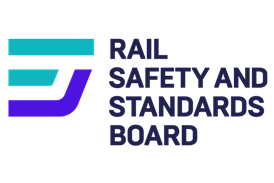INTRO: The proposed merger between Burlington Northern Santa Fe and Canadian National has been put on hold pending a review of the industry situation by the US Surface Transportation Board. Some recent mergers went smoothly, but others brought serious disruption which has raised questions over whether mergers offer real benefits for customers, investors, and rail’s market share
BYLINE: Michael SGalardi and Michael K Higgins, with Andrew F Saxe*
IN EARLY MARCH the principal US rail regulator, the Surface Transportation Board, shook up North America’s rapidly consolidating freight railroad industry by announcing a moratorium on further rail mergers for the next 15 months (RG 4.00 p201). The main target of this action was the proposed merger between Burlington Northern Santa Fe and Canadian National.
BNSF’s extensive network covers the western two thirds of the United States. CN runs from coast-to-coast in Canada, and recently added a north-south corridor through the US Midwest through last year’s merger with Illinois Central. The BNSF-CN proposal envisages the creation of a genuine transcontinental railroad in North America, but the STB ruling will clearly delay and possibly forestall this merger.
Rival railroads Norfolk Southern and CSX had called for the moratorium, and Union Pacific hailed the ruling as ’in the industry’s best interest.’ But BNSF’s Chief Executive Officer Robert Krebs, blasted the decision as ’illegal’, quickly filing a suit against the Board, and excoriating his opponents.
’The STB should not be permitted to stop a good merger in its tracks because of concerns about bad mergers coming down the road’, he insisted. ’And our competitors should stop frightening shippers with threats that, if our combination is not halted, they will carry out their own ill-considered mergers, once again saddling their customers (and ours) with service crises and breakdowns.’
The frustration at BNSF and CN is certainly understandable. Their previous mergers both went relatively smoothly. The merger of Burlington Northern and Santa Fe in 1995, while hardly trouble free, did not cause major service problems. CN’s 1997 merger with the much smaller Illinois Central also suffered few disruptions.
What grabbed the headlines was the system breakdown that followed Union Pacific’s acquisition of Southern Pacific. Vowing not to repeat UP’s problems, Norfolk Southern and CSX delayed their integration of Conrail, but splitting up the Conrail network proved so complex that service was still disrupted. BNSF and CN, with their relatively good records on post merger integration, no doubt feel they are being punished for the sins of other railroads.
What do mergers deliver?
So can some light be generated amidst all this heat? Have railroad mergers failed their promise, or do they contain inherent benefits which can be unleashed if managed properly?
When the latest round of mergers was launched in the mid-1990s, railroads promised a range of benefits to their various constituencies (Table I). Shippers would receive seamless service over larger geographic areas, fewer interchange moves to and from other railroads, smoother delivery, and a broader range of services. By enhancing their customer service, the railroads would increase their modal share of freight, taking more lorries off the nation’s highways. For investors, additional capacity, better routing and streamlined operations would translate into stronger financial performance, resulting in higher stock valuations.
But despite the rigorous justification processes and planning, recent North American railroad mergers have struggled to live up to their promise. For customers, mergers often caused service to deteriorate significantly. Modally, mergers did not halt the growth of lorry traffic, which increased by 17·4% between 1995 and 1997 compared to just 2·9% for rail traffic.
For investors, the mergers were costly. The operating ratios (operating expenses as a percent of revenues) of UP, NS and CSX actually rose after their respective mergers, while revenue per tonne-km declined, in part due to service disruption costs and poor operating performance. Since the start of 1997, when the historic bull market drove the Standard & Poor’s 500 index up 83·6%, stock prices of the six major railroads have dropped by an average of 30·7% (Fig 1) The market-to-book value ratios dropped from between 2 and 2·5 in mid 1997 to 1·5 or less by the start of 2000.
Are mergers inherently bad? Or were several of the most recent mergers simply executed improperly? This is an increasingly relevant issue for the global rail industry, particularly in Europe where for the first time rail freight operations are being consolidated across national boundaries. Industry players in North America suggest that mergers contain inherent benefits which can be dissipated by problematic integration. Recent mergers stumbled, it appears, for three principal reasons.
First, railroads too often focused on Wall Street’s demand to cut costs as a way of servicing their increased debt loads and, in the process, took their eyes off customer service. As a result, revenue growth was sacrificed to cost cutting.
Second, the railways neglected or miscalculated the effort and attention needed to address cultural and organisational issues, and failed to deal appropriately with the human side of the equation.
Finally, the companies underestimated the complexities and challenges of integrating geographically disperse physical rail networks with multiple types of equipment, technologies, and processes.
Contributing to the complexity are:




















